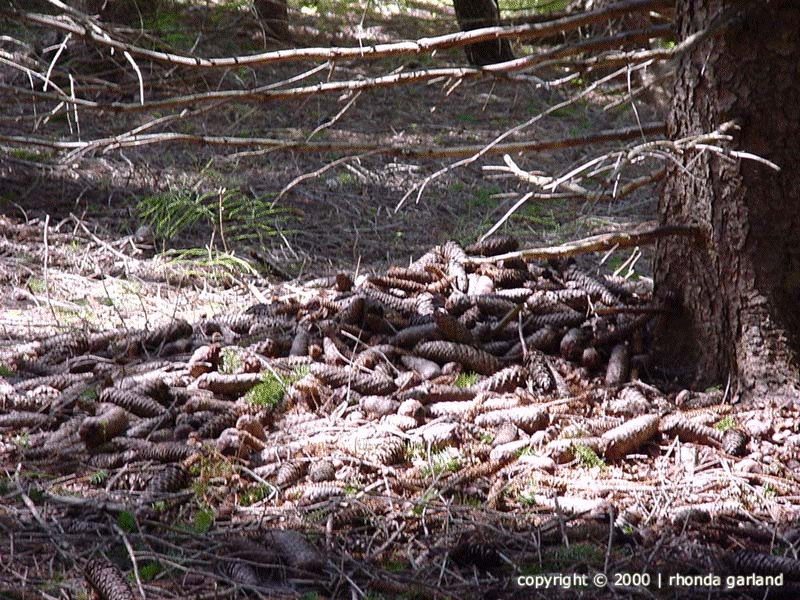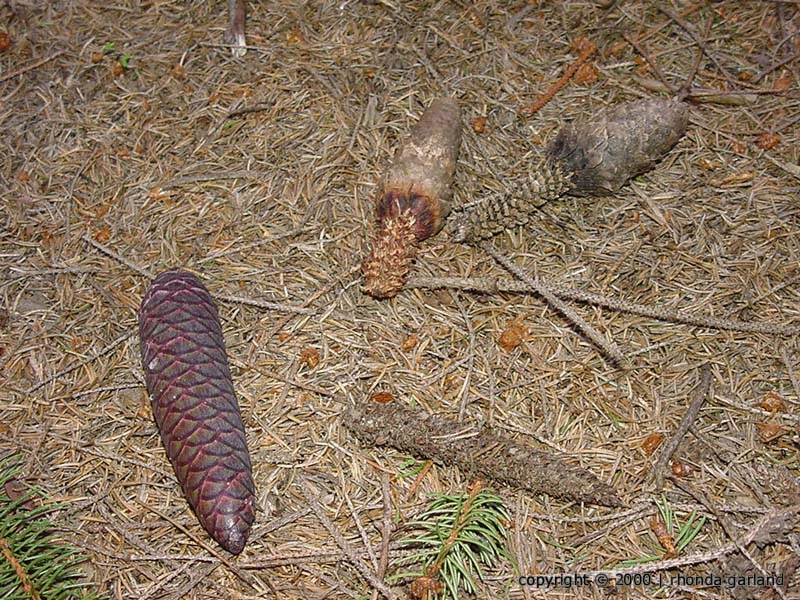
 The seeds of Norway spruce cones provide food for squirrels. Evidence
that squirrels have been feeding on these cones comes from remains of cones
with all the scales and seeds gone (in the photo compare the intact cone on the left to the partially eaten cones on the right). As well, piles of cone scales can be found at the base
of some trees where the squirrels have been sitting to eat the cones (these
are called squirrel middens). One way of assessing squirrel abundance is
to count the number of middens per unit area. The squirrels not only eat
the cones now, but they also bury them in caches for winter food. Some
individual caches may contain as much as a bushel of cones.
The seeds of Norway spruce cones provide food for squirrels. Evidence
that squirrels have been feeding on these cones comes from remains of cones
with all the scales and seeds gone (in the photo compare the intact cone on the left to the partially eaten cones on the right). As well, piles of cone scales can be found at the base
of some trees where the squirrels have been sitting to eat the cones (these
are called squirrel middens). One way of assessing squirrel abundance is
to count the number of middens per unit area. The squirrels not only eat
the cones now, but they also bury them in caches for winter food. Some
individual caches may contain as much as a bushel of cones.
The impact of seed predation on the spruce trees is not
necessarily all negative. The squirrels provide a means of seed dispersal.
The winter cache may in fact be a long distance from the parent plant and
if the cache is not completely used up by the spring, these seeds will
germinate.

Furthermore, there are ways the trees can minimize the negative
effects of predation but at the same time use the predators for dispersal.
Many trees normally produce only a few seeds each year but then occasionally
produce a very heavy crop (i.e., a mast year; a pile of cones produced during a mast year is shown in the photo on the right). The relatively low
year to year seed production maintains a relatively small population of
seed predators. Then during the mast year, the population of predators
is satiated and many seeds will escape predation.
We have two squirrel species in this area: